The Different Types of Security System Equipment
See what types of equipment can be added to enhance your security system
Standard Security System Equipment
The top home security companies use the latest home security equipment. Before you can decide which security system set up is right for you it’s best to learn about each piece of security system equipment, how it works and why it’s important.

Security System Control Panel
The security system Control Panel is the most important part of your home security system. It is the “brain” or “hub” of your system and communicates with the monitoring station by hooking up to your phone line, Internet connection or a built in cellular device. Many modern Control Panels contain the main keypad and siren. Popular Control Panels include the GE Simon XT and 2Gig Go! Control.

Security System Keypad (Touchpad & Touchscreen)
A security system keypad or touchscreen is used to control your security system settings, arm and disarm your system and manage home automation devices while at home. Multiple keypads can be used throughout a home including the bedroom, garage or by the front door. A keypad can be built in to the Control Panel or used separately.
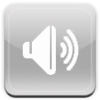
Alarm Siren
The siren sounds when your security system is triggered. It is intended to scare off potential intruders. Some alarm sirens are built in to the Control Panel while others may be installed elsewhere in the home like the attic. Common sirens range in decibel level from about 85db-120db.
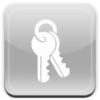
Keychain Remote
A security system keychain remote is an accessory device that allows you to arm/disarm your security system from a small remote on your keychain. It can also be used to set off a panic alert or to turn lights on or off. The keychain can normally be used within 50-100 feet of the home.
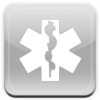
Panic/Medical Alert Pendant
Panic buttons can be programmed to trigger a burglar alarm or alert medical authorities. They are used in emergency situations and will automatically notify your control panel to contact the police or medical personnel and may also trigger your siren.

Yard Signs & Window Decals
Security system yard signs and window decals are given out by your security company when you purchase an security system. They are meant to be displayed in your yard or in your window to show potential burglars that your house is protected by a home security system.Security System Entry Detection Sensors
Sensors that detect unwanted entry are the foundation of a good security system, but there have been some changes in the technology that can greatly enhance your safety. Every security system should come with some basic sensors, but you should take a look at what you could add for extra security.
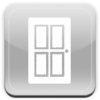
Door Sensor
The door sensor is placed on your entry doors to detect an intrusion. There are two pieces to a door sensor. One piece of the sensor is placed on your door and the other on your doorframe. When a door is opened the door sensor triggers the Control Panel to sound the alarm.

Window Sensor
A window sensor is the same sensor as a door sensor, yet is placed on your window. One piece goes on your window and the other on the window frame. Window sensors are used to detect the opening of a window.

Recessed Door Sensor
A recessed door sensor is similar to a standard door sensor. A recessed sensor is actually drilled in to your door and doorframe. It may be used for aesthetic reasons or if your doorframe is not flush with your door; for instance if you have molding on the doorframe.

Recessed Window Sensor
A recessed window sensor is similar to a standard window sensor. A recessed window sensor is drilled in to the window and window frame. It may be used for aesthetic reasons of if a standard window sensor cannot be used.
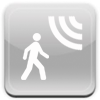
Motion Sensor (Indoor & Outdoor)
Motion Sensors are used to detect movement inside the home. Motion Sensor can cover an area of about 1,000 sq. ft. and are used to cover large areas with a small amount of sensors; for instance if a room has a lot of windows.

Glass Break Sensor
The Glass Break Sensor detects when a window is broken. It triggers from the sound of breaking glass and is used to cover large glass windows or an area with an abundance of windows.

Shock/Vibration Sensor
Shock sensors are less common but are used to detect the vibration in a window. It will trigger from the shock or vibration of an intruder striking the window or window frame.
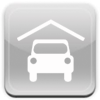
Garage Door Sensor
The Garage Door Sensor has a simple job. It is used to alert you when your garage door is opened. Most Garage Door Sensors are not programmed to sound an alarm, only to notify the homeowner. However, Garage Door Sensors can be programmed to trigger an alarm if requested.Security System Threat Detection Sensors
Not all the things that threaten your home or family involve someone trying to break into your home. The threat of fire, CO2, and freezing, can cause many problems. Luckily, most home security systems have additional sensors that can be added to help keep an eye on these kinds of threats.

Smoke Sensor
Smoke Sensors are used to detect smoke in the home from a possible fire. The Smoke Sensor triggers the alarm and sends an alert to the Control Panel to contact the fire department automatically. Smoke Sensors are best used near bedrooms and are often combined with Heat Sensors.
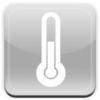
Heat Sensor
A Heat Sensor will detect the rapid rise in heat in your home. If the temperature in your home changes drastically from a fire the Heat Sensor will trigger and an alert is sent to the fire department. A Heat Sensor can be combined with a Smoke Sensor or used on its own. Common uses for a Heat Sensor are in humid or dusty areas.

CO2 Sensor
A CO2 Sensor is used to detect C02 gas in the home from a possible gas leak. This environmental sensor triggers an alert to monitoring center to contact the proper authorities.

Freeze Sensor
Freeze Sensors are used to detect a drop in temperature in the home. Freeze Sensors will trigger if the temperature drops below 50 degrees and is designed to warn of the possibility of freezing pipes.
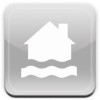
Flood Sensor
The Flood Sensor is used to detect standing water in the home. There are two parts to the Flood Sensor. One piece goes on the floor and the other a few inches higher on the wall. The piece on the floor is the “sensor” and the piece on the wall the “communicator”.Security System Cameras
Security cameras can be added and greatly improve the functionality of your home security system. Cameras were once expensive and hard to install, but new technology and installation methods have changed the game. Now you can easily add and install your own cameras to increase your safety and have the ability to keep a close eye on the safety of your loved ones.

Indoor Wireless Camera
The Indoor Wireless Security Camera is used to personally monitor your home through video. Indoor Wireless Cameras connect to your wirelessInternet and can be viewed online or on your smartphone while away from the home. You can use the camera to view live video or recordings.

Outdoor Wireless Camera
An Outdoor Camera is used for surveillance of the outside of your home. Outdoor Cameras are normally wired to your router using a standard Ethernet cable. The Outdoor Camera can also use your router’s power supply and does not need a plug.

Image Sensor
Image Sensorsare newer security system devices that have a built in lens to take a picture when movement is detected. This can be used to capture images of a possible intruder.Home Automation Equipment
Home automation and applications that transform security systems into energy saving systems are quickly becoming popular amongst home owners. You can now add simple devices that transform the way you manage your home’s appliances, security system, and thermostats. These devices offer the capability to remotely manage your home and security system.

Mobile Application
Mobile Applications for the iPhone, BlackBerry & Android are provided for free with Interactive Monitoring from your home security company. Using your Mobile Application you can receive instant alerts, arm/disarm your system, manage home automation devices and view streaming or recorded video.

Light Module
A Light Module is a home automation device that allows you to turn on and off lights remotely. The Light Module usually plugs in to the wall outlet with a separate plug for your lamp. One Light Module is needed for each lamp.

Remote/Automatic Door Locks
Automatic Door Locks are home automation devices that replace your standard door locks. They are used to automatically lock or unlock your door from your smartphone, keypad or remote.



